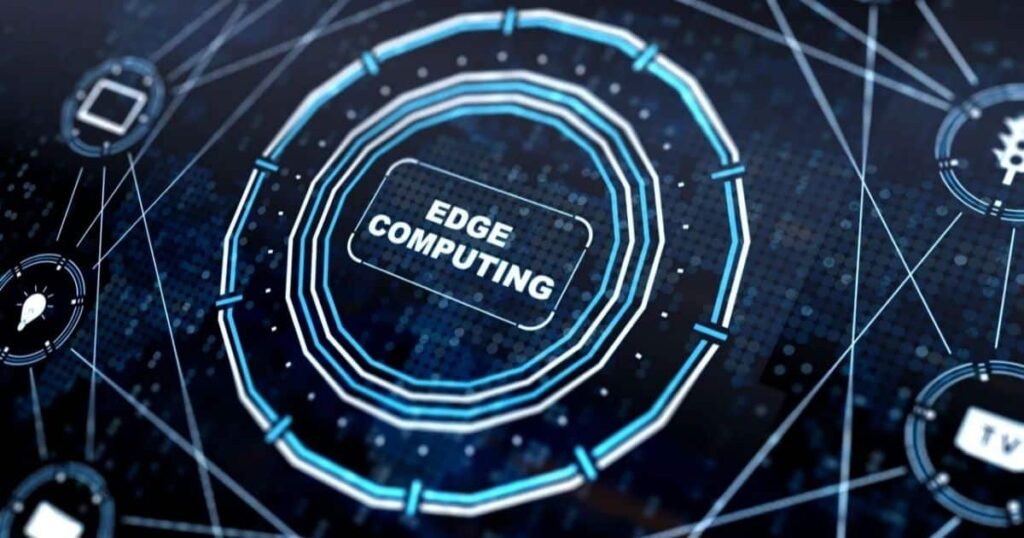In an era marked by growing concerns about environmental sustainability and the need for efficient resource management, the integration of technology has emerged as a powerful ally. One technology, in particular, has been gaining traction for its potential to drive sustainable practices and revolutionise various industries – edge computing.
This comprehensive exploration will delve into the multifaceted world of edge computing, examining how it can be harnessed to improve sustainability across diverse sectors. We will navigate through the fundamentals of edge computing, its applications in energy management, agriculture, smart cities, healthcare, and industry, and conclude by envisioning a more sustainable future.
Understanding Edge Computing
Edge registering addresses a change in perspective in the realm of information handling. Not at all like customary distributed computing, where information is shipped off far off server farms for investigation and handling, edge figuring decentralizes this interaction. At its core, edge computing involves the deployment of computing resources closer to the data source, such as sensors or IoT devices. This proximity enables real-time data analysis, reduced latency, and enhanced efficiency. In the context of sustainability, understanding edge computing’s architecture and advantages is crucial to exploring its potential applications.
Edge computing empowers organizations to process data at the source, eliminating the need to transmit vast amounts of data to distant data center’s for analysis. This reduction in data transfer not only minimizes latency but also conserves energy, a critical aspect of sustainability. By minimizing the energy-intensive process of data transmission over long distances, edge computing reduces carbon emissions associated with data centers and network infrastructure.
In addition to energy savings, edge computing offers enhanced data privacy and security. With data processed locally, there is a reduced risk of data breaches during transit to centralized data centers. This heightened security is essential for organizations handling sensitive information related to sustainability efforts, such as energy consumption patterns, agricultural data, or healthcare records.
Energy Management
Energy consumption and management are central to sustainability efforts. Edge computing plays a pivotal role in optimizing energy usage by providing real-time data analytics for energy systems. In smart grids, for instance, edge devices can monitor electricity generation and consumption, identify inefficiencies, and enable quick responses to fluctuations.
This ensures a more reliable and sustainable energy supply. We will explore how edge computing transforms energy management, reduces waste, and contributes to a greener future. Edge figuring’s constant information handling capacities are especially important in the domain of energy the board. With the incorporation of sensors and IoT gadgets, energy frameworks can ceaselessly screen and change energy utilization in light of interest, sustainable power accessibility, and matrix soundness.
For instance, in a brilliant home furnished with edge registering innovation, machines can facilitate their energy use to limit top burdens, in this way diminishing stress on the matrix and advancing energy productivity.
Agriculture and Precision Farming
Horticulture is a foundation of human endurance, and its maintainability is fundamental. Edge processing engages ranchers with constant information on soil conditions, climate, and yield wellbeing. This enables precise irrigation, reduced pesticide use, and increased crop yields. The fusion of IoT sensors and edge computing is ushering in the era of precision farming, promoting sustainable agriculture practices that conserve resources and protect the environment.
Precision farming, facilitated by edge computing, has the potential to address some of the most pressing sustainability challenges in agriculture. By intently checking soil dampness levels and supplement content, ranchers can enhance water system and preparation, lessening water waste and restricting synthetic overflow into water bodies. Additionally, consistent environment data engages farmers to make informed decisions concerning planting, procuring, and trouble control, inciting higher harvest yields with less resources.
The gathering of exactness developing practices chips away at agrarian legitimacy as well as works on the monetary reasonableness of developing exercises. By diminishing asset squander and advancing yields, ranchers can accomplish more prominent productivity while limiting their natural impression. This win-win scenario demonstrates the transformative potential of edge computing in agriculture.
Smart Cities and Urban Sustainability
The rapid urbanization of our world necessitates innovative solutions for sustainable urban living. Edge computing is the linchpin of smart city initiatives. From intelligent traffic management to waste reduction and efficient public services, edge devices are at the heart of it all. This section will illuminate how edge computing is transforming urban landscapes, improving residents’ quality of life, and reducing the environmental footprint of cities.
Smart cities leverage edge computing to collect and process vast amounts of data from various sources, such as traffic cameras, environmental sensors, and public infrastructure. This data is then analyzed in real-time to enhance urban sustainability. For instance, intelligent traffic management systems powered by edge computing can optimize traffic flow, reduce congestion, and minimize carbon emissions by dynamically adjusting traffic signals and routes.
Waste management in smart cities also benefits from edge computing. Sensors in trash bins can signal when they need emptying, optimizing waste collection routes to reduce fuel consumption and greenhouse gas emissions. Additionally, edge devices can analyze air quality data to detect pollution hotspots and trigger interventions to improve urban air quality.
Healthcare and Remote Monitoring
Healthcare sustainability extends beyond reducing medical waste; it encompasses accessible and efficient healthcare delivery. Edge computing facilitates remote patient monitoring, allowing healthcare providers to offer timely interventions, optimize resource allocation, and reduce the need for physical consultations. We’ll delve into the transformative potential of edge computing in healthcare, making healthcare systems more sustainable and resilient.
Edge computing is revolutionizing healthcare by enabling the seamless integration of IoT devices, wearables, and sensors for remote patient monitoring. Patients can have their vital signs, chronic conditions, and medication adherence tracked in real-time, allowing healthcare professionals to intervene proactively and prevent hospital readmissions.
The advantages of edge figuring in medical services reach out to telemedicine, where constant video discussions and analytic information can be safely sent and dissected at the edge, guaranteeing security and decreasing the weight on medical services offices. This works on persistent results as well as decreases the carbon impression related with superfluous clinic visits.
Industry 4.0 and Sustainable Manufacturing
In the industrial realm, edge computing is driving the fourth industrial revolution (Industry 4.0). By providing real-time data analysis, predictive maintenance, and efficient automation, edge computing optimizes manufacturing processes, reduces energy consumption, and minimizes material waste. This section explores how Industry 4.0 powered by edge computing is revolutionizing manufacturing practices and contributing to sustainable industrial growth.
Industry 4.0 leverages edge computing to enable predictive maintenance, which prevents equipment failures by analyzing sensor data for signs of wear and tear, enabling timely repairs. This approach minimizes downtime, reduces resource waste, and extends the lifespan of machinery, aligning with sustainability goals.
Edge computing also enhances energy efficiency in manufacturing by optimizing equipment operation based on real-time energy consumption data. Shrewd plants outfitted with edge gadgets can powerfully change creation timetables to exploit lower energy costs during off-top hours, further lessening the natural effect of modern activities.
Final Verdict
Edge registering, with its capacity to handle information at the source and continuously, is a distinct advantage for maintainability. From optimizing energy management and transforming agriculture to building smart cities and revolutionizing healthcare and manufacturing, edge computing offers multifaceted solutions to our sustainability challenges.
As we stand at the crossing point of innovation and manageability, it is obvious that edge figuring can possibly shape a more maintainable future, one where assets are preserved, productivity is boosted, and ecological effects are limited. The excursion has recently started, and the potential outcomes are vast. With progressing development and a pledge to manageability, we can fabricate a superior and more supportable world for a long time into the future.




